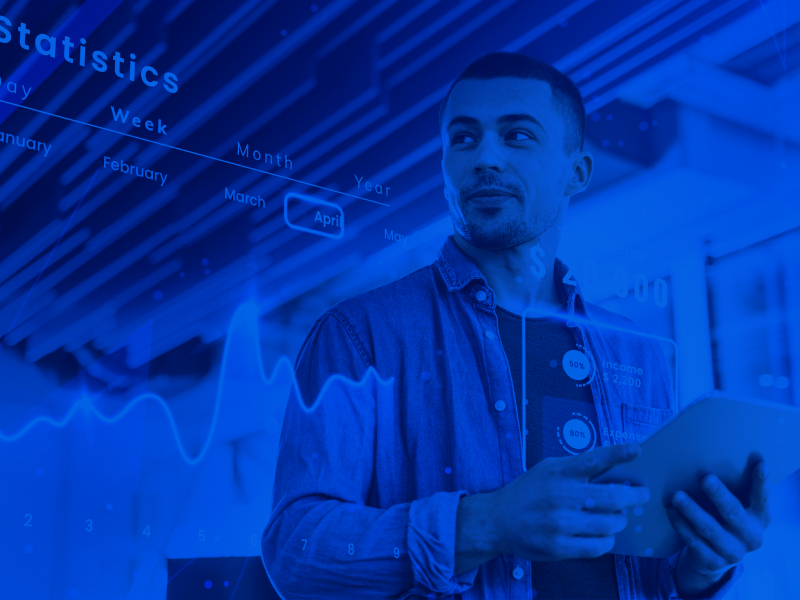Advancements in artificial intelligence (AI) have modernized the digital economy, introducing innovations that redefined sectors such as retail, customer service, and the arts. Large language models are the prime example, strengthening communication and providing innovative solutions that boost efficiency and creativity across industries.
Industries like transportation, logistics, construction, and energy form the spine of the physical economy. They determine the production and distribution of goods, provide energy, cultivate food, and maintain infrastructure, all of which are fundamental for societal well-being and functionality.
AI’s impact on the digital world is wildly contrasted by its limited application in the physical economy. GenAI promises to fill this gap, offering solutions that can transform industries by addressing complex challenges that have long hindered efficiency and safety.
GenAI for safety and efficiency
Industries within the physical economy confront numerous safety challenges, and GenAI has created methods to mitigate these risks. Leveraging computer vision, GenAI supersedes traditional safety measures by providing advanced detection and predictive capabilities. Some key examples of this include:
Traffic management
For traffic management, GenAI can create synthetic data sets to train models to predict and detect traffic violations accurately. For instance, GenAI can simulate various traffic scenarios, including violations and near-miss events, which are otherwise hazardous and unethical to stage in real life; leading to proactive alerts and interventions that improve road safety. Reflecting on statistics from the Federal Highway Administration, where over 50% of crashes with fatalities or injuries occur at or near intersections, the deployment of GenAI in traffic is a testament to the potential for reducing such incidents.
Construction safety
The construction sector benefits significantly from GenAI through the simulation of hazardous scenarios. Traditional safety training often relies on descriptions and manual rehearsals of potential dangers, which do not capture the unpredictability and complexity of real-life situations. GenAI will fill this gap by creating detailed and varied synthetic scenarios that mirror the unpredictability of actual construction sites. Workers train with AI-generated simulations that mimic falling debris, machinery malfunctions, and other common hazards, preparing them for a wide array of potential dangers. Consequently, the industry sees a reduction in workplace accidents and a marked improvement in overall safety protocols.
Efficiency and cost reduction
Alongside safety enhancements, GenAI contributes to operational efficiency and cost-effectiveness within physical industries. By automating data generation and analysis processes, GenAI all but removes the need for expensive, time-consuming, and potentially hazardous data collection methods. For instance, creating synthetic data for AI training circumvents the costs and risks associated with capturing real-world anomalies or rare events. Industries benefit from bettered operations, as AI-enhanced systems optimize tasks, predict maintenance needs, and offer data-driven insights for decision-making.
Overcoming data challenges with GenAI
Physical industries encounter numerous obstacles in gathering data due to the perilous or intricate nature of their operational environments. Traditional methods of data collection can expose workers to risks or simply fail to capture the complexity of real-world scenarios effectively. GenAI steps in as a transformative solution, creating synthetic, yet remarkably realistic, data sets that can train AI models without the associated risks or logistical nightmares.
In industries like construction or mining, capturing data on potentially hazardous events or malfunctions requires exposure to danger, a scenario far from ideal. GenAI circumvents this by synthesizing data that models these risky situations without putting human lives in jeopardy. For example, an AI can simulate a wide array of construction site accidents or traffic violations in a virtual environment, providing ample data for training predictive models without actual risk.
Manufacturing provides another apt illustration. Instead of waiting for a rare but catastrophic equipment failure to occur to gather data, GenAI predicts and models these failures. It generates data sets that reflect a broad spectrum of potential malfunctions, which in turn, informs the development of predictive maintenance algorithms that can foresee and mitigate downtime in real factories.
Importance of data quality
Success in AI model development hinges on the quality of data used for training. High-quality data leads to more accurate, reliable, and impressive AI systems. In the context of GenAI, improving data quality transcends merely gathering vast amounts of information; it involves creating detailed, nuanced synthetic data that closely mirrors real-world conditions.
GenAI elevates data quality by incorporating diverse variables and scenarios, so that the synthetic data sets are comprehensive and reflective of real-world complexities. In doing so, it aids industries in overcoming the twin challenges of data scarcity and the risk of data collection. For instance, an AI model trained to predict weather patterns for agricultural purposes benefits immensely from synthetic data that includes a wide range of meteorological conditions, far beyond what a single season or location might offer. Moreover, the precision of GenAI in creating data sets extends to ensuring consistency and reducing biases, which are often prevalent in manually collected data sets.
Future prospects and ethical considerations
GenAI promises revolutionary impacts on physical industries, through operational efficiencies, safety measures, and resource management. Envision a world where predictive maintenance preemptively addresses machinery issues before they result in costly downtime, where safety protocols are so advanced that workplace accidents become rare, and where resource allocation is optimized to such a degree that waste is minimized and productivity maximized.
Predictive maintenance
With GenAI, industries can foresee machinery failures before they occur, scheduling maintenance and reducing unexpected breakdowns. This foresight will lead to substantial cost savings and increased machinery lifespan, contributing to a more sustainable industrial environment.
Safety protocols
Imagine construction sites where AI anticipates potential hazards and alerts workers in real time, significantly reducing accident rates. In transportation, GenAI could all but guarantee the safety of both passengers and pedestrians by predicting and mitigating risks on the road.
Resource allocation
GenAI can analyze patterns and predict trends, optimizing the allocation of resources across industries. In energy, for example, AI could predict demand surges and adjust resource distribution accordingly, leading to more efficient energy use and reduced waste.
Ethical and responsible AI Development
As GenAI progresses, integrating ethical considerations becomes indispensable. Developers and stakeholders must commit to responsible AI practices, prioritizing transparency, fairness, and accountability in AI systems.
Prioritizing transparency
Transparency in AI processes allows for greater understanding and trust among users and stakeholders. Clear explanations of how AI models make decisions are essential for ethical AI applications in physical industries.
Ensuring fairness
AI systems must be free from biases that can lead to unfair outcomes. Regular audits and updates are necessary to maintain fairness, particularly in applications that significantly impact worker safety and operational efficiency.
Upholding accountability
Accountability mechanisms should be in place to address any issues or unintended consequences arising from AI applications. Stakeholders must have clear protocols for rectifying any problems and ensuring AI systems align with ethical standards.
Forward look
As we anticipate the future trajectory of GenAI in physical industries, our focus should expand beyond immediate technological advancements to include long-term strategic planning and the broader societal implications of these technologies. Envisioning a future where GenAI integrates into the fabric of physical industries requires a proactive approach to innovation, regulation, and collaboration.





